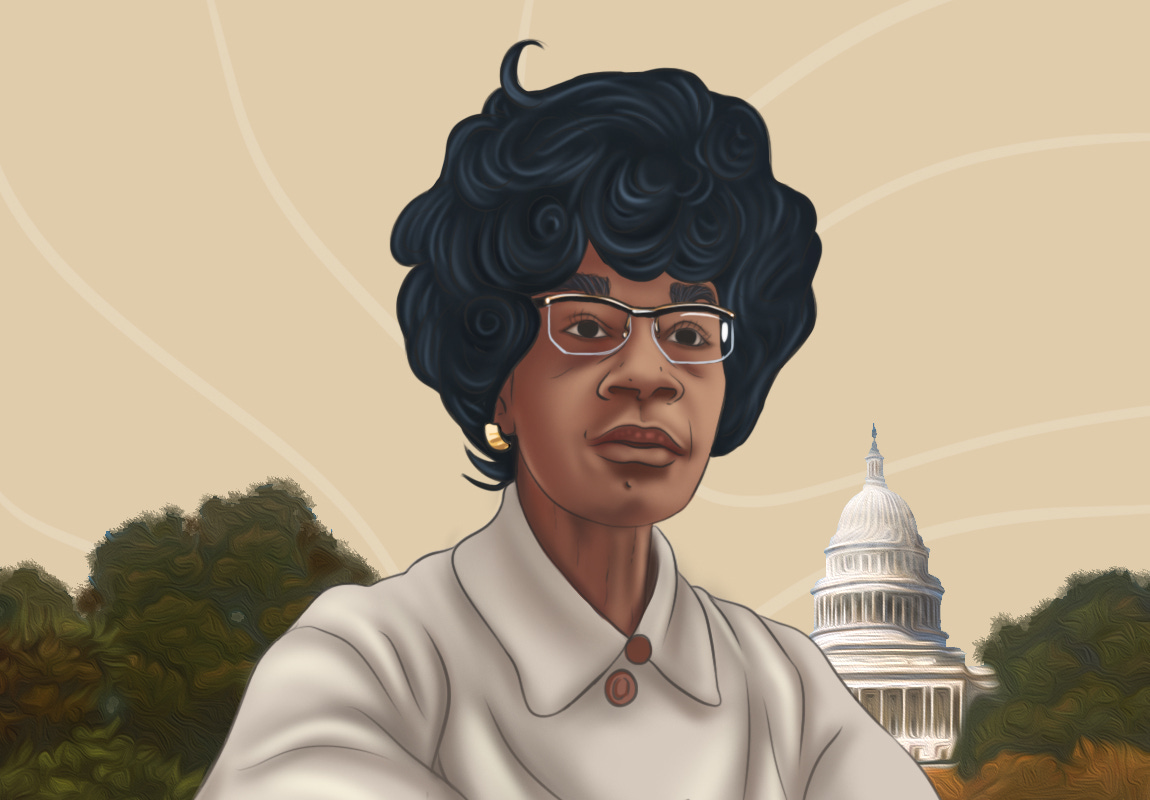Shirley Chisholm – American politician, feminist and social activist- was the first African American woman to be elected to the US Congress. She was also the first woman and also the first African American to seek nomination for president of the United States representing a major political party.
Shirley was born on November 30 1924, in Brooklyn, New York. She was the oldest of four daughters of Charles St Hill and Ruby Seale St Hill. Her father was a factory labourer from Guyana and her mother was a seamstress from Barbados.
For most part of her childhood, Shirley lived in Barbados on her maternal grandparents’ farm, receiving a British education while her parents worked during the Great Depression to settle the family in Bedford-Stuyvesant. She had a slight clipped British accent, which was a manifestation of her West Indian roots which she maintained throughout her life.
Shirley attended public schools in Brooklyn and passed with high marks. After completing her schooling in flying colours, she attended Brooklyn College on scholarship and graduated cum laude with a BA in Sociology in 1946. During that time, her professors encouraged her to consider a political career, but she replied that she faced a ‘double handicap’ as she was both black and female.
Shirley started teaching nursery school and served as the director of the Friends Day Nursery in Brooklyn. During this time, she studied elementary education at Columbia University. She married Conrad Q. Chisholm in 1949. They got divorced in 1977. She graduated from Columbia University in 1951.
Shirley served as an educational consultant for New York City’s division of day-care from 1959-1964. She was also active with community and political groups, including the National Association for the Advancement of Coloured People (NAACP) and her city’s Unity Democratic Club.
In 1964, Shirley became the second African American in the New York legislature. In 1968, when court-ordered-redistricting created a new, heavily Democratic district in her neighbourhood, she sought and won a seat in Congress. She introduced over 50 pieces of legislation there and fought for racial and gender equality, for improving the conditions of the poor, and for ending the Vietnam War.
In 1974, a Gallup poll listed her as one of the top 10 most-admired women in America –ahead of Jacqueline Kennedy Onassis and Coretta Scott King, and tied with Indian Prime Minister, Indira Gandhi for sixth place.
In 1971, Shirley co-founded the National Women’s Political Caucus, and in 1977 she became the first black woman and the second woman ever to serve on the powerful House Rules Committee. In the same year, she married Arthur Hardwick Jr., a New York State legislator.
Shirley had to face severe discrimination following her quest for the 1972 Democratic Party presidential nomination. She was blocked from participating in televised primary debates. According to Women’s History, when she took legal action, she was permitted to make just one speech.
Even though she was subjected to discrimination, students, women and minorities were her supporters. Despite having an under-financed campaign and contentiousness from the predominantly male Congressional Black Caucus, she entered 12 primaries and garnered 152 of the delegates’ votes. Her presidential campaign also strained relations with other women members of Congress, particularly Bella Savitzky Abzug, of New York, who endorsed South Dakota Senator George Stanley McGovern instead of Shirley.
During her stint in power, she sponsored increases in federal funding to extend the hours of day-care facilities and a guaranteed minimum annual income for families, and defended federal assistance for education.
While Shirley’s presidential bid enhanced her national profile, it stirred a huge controversy among her colleagues. Her candidacy split the Congressional Black Caucus – many black male colleagues felt she had not consulted them or that she had betrayed the group’s interests by trying to create a coalition of women, Hispanics, White liberals, and welfare recipients. During this time, she noted: “Black male politicians are no different from white male politicians. This ‘woman thing’ is so deep. I’ve found it out in this campaign if I never knew it before.”
In 1974, a Gallup poll listed her as one of the top 10 most-admired women in America –ahead of Jacqueline Kennedy Onassis and Coretta Scott King, and tied with Indian Prime Minister, Indira Gandhi for sixth place.
Shirley continued to work for the causes she had espoused as an activist. During her stint in power, she sponsored increases in federal funding to extend the hours of day-care facilities and a guaranteed minimum annual income for families, and defended federal assistance for education. She had the audacity to criticise the flaws in Democratic leadership in Congress as much as she did the Republicans in the White House.
After retiring from Congress in 1983, Shirley remained active in lecture circuits. She held the position of Purington Professor at Mount Holyoke College (1983–87) and was a visiting scholar at Spelman College (1985). In1993, President Bill Clinton invited her to serve as Ambassador to Jamaica, but she declined the invitation due to poor health.
Shirley Chisholm died on January 1, 2005. She was posthumously awarded the Presidential Medal of Freedom in 2015.
Now put on your thinking hats and think about the following questions for a couple of minutes.
Can you think of how Shirley Chisholm used her power to improve the quality of life of the poor?
How would you describe the contributions of Shirley Chisholm in the struggles for racial and gender equality?
Write down your thoughts and discuss them with your students, children and your colleagues. Listen to their views and compare them with your own. As you listen to others, note how similar or different your views are to others’.
Thank you for listening. Subscribe to The Scando Review at thescandoreview.com.
Happy Teaching!














Shirley Chisholm, first Black woman elected to US Congress